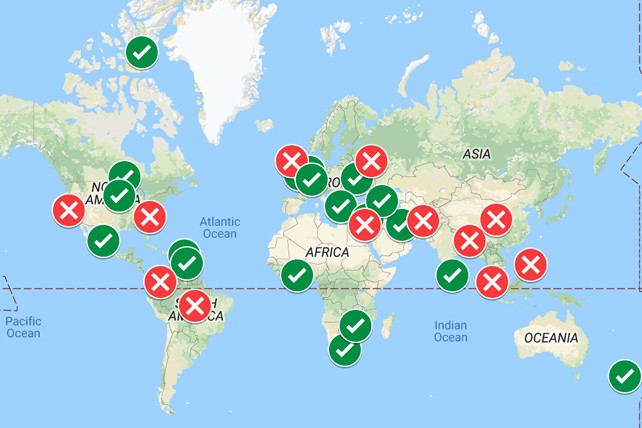There’s an eery feeling with vaping that harks back to a vintage time of big tobacco when the marketing was unregulated, uncontested, and backed by pseudo-science. Robert Jackler, an advertisement researcher at Stanford University said: “e-cigarettes ignore absolutely everything that was ever agreed to around combustible cigarettes.” Throughout the years, tobacco regulation has become more and more restrictive: erasing friendly brand ambassadors like Camel Joe, banning tobacco advertisements and recently, in 2007, banning smoking in UK pubs.
But it seems vaping has picked up where tobacco left off with targeted marketing, misrepresenting contents, and misleading advertising, things tobacco was banned from doing a long time ago. Some vapes come in sleek and colourful packaging, with fruity flavours like “blue razz lemonade” and “cotton candy”. There’s a real sense of marketing déjà vu when it comes to e-cigarettes, which may allow for new costs to be ushered in under the radar. But how has vaping become the new cigarettes on the block?
Those who are switching and those who are picking it up for the first time
Vaping’s health benefits in reducing tobacco use should not be discredited; it’s a useful tool for smoking cessation and reducing smoking-related harms. However, the ethics of marketing to young people who are increasingly vaping require additional scrutiny, particularly to address “inaccurate perceptions” marketed of its potential harms.
The rise of vaping in the UK
Since 2012, vaping use has risen significantly. According to Action On Smoking Health (ASH) statistics, 1.7% of adults were vapers in 2012. By 2017, it jumped to 5.8% and, by 2022, to 8.3% of the population, representing 4.3 million people. As expected, around 57% of current vapers are ex-smokers, and 35% are current tobacco users (considered dual users). Although still low and accounting for 350,000 vapers, the number of e-cigarette users who have never smoked rose from 4.9% in 2021 to 8.1% in 2022.

Vaping use amongst adolescents
According to a survey by NHS Digital, 9% of 11 to 15 year olds used vapes either occasionally or regularly, and amongst 15 year olds, 18% were current e-cigarette users. The percentage of 11- to 15-year-olds that were dual users (using both tobacco and e-cigarettes) has more than doubled, going from 29% in 2018 to 61% in 2022. Additionally, ASH’s polling showed that vaping amongst people aged 11-17 rose from 3.3% in 2020 to 7% in 2022.
Given the lack of long-term health effect studies of vape use, it’s difficult to determine the future impact of the increasing number of young vapers. A recent study found that young e-cigarette users were three times more likely to transition to cigarette smoking compared to non-users.
What’s attracting young people to vaping?
Research suggests older generations use e-cigarettes differently than younger generations. For many adults, it’s a method to stop smoking. Amongst younger generations, however, e-cigarettes are a ‘new-found’ pleasure: “I like the flavours” and “I enjoy the experience” were common reasons young people started vaping.
Younger generations also make up 57% of all users of fruit flavoured vapes. E-cigarettes appeal to younger generations with hyper palatable flavours, infantilised or trendy colours with ‘cool’ vapour fumes.
Companies claim their marketing tactics aren’t targeting children, but the evidence suggests otherwise. In America, Juul (in which the makers of Marlboro have a 35% stake) recently paid a $1.7 billion lawsuit to settle a past investigation that claimed its e-cigarettes were more addictive than advertised and a further $438 million after being found to have targeted young people with fruity flavours, used young models in advertisements, and misrepresented their product’s nicotine levels.
A 2021 Cancer Research UK (CRUK) published a report highlighting similarities between vape marketing in the UK and the case of Juul. The report showed that young people are exposed to much higher e-cigarette advertising than older people, with a third believing it’s targeting people who don’t smoke. CRUK couldn’t determine if people were under 25 in 34% of adverts, and 90% of adverts didn’t feature smoking cessation messages or present e-cigarettes as an alternative to tobacco. According to the Advertising Standards Authority (ASA), e-cigarette marketing must not encourage non-smokers or non-nicotine users to use e-cigarettes, making it unclear what the purpose is of branding vapes in bright colours and fruity flavours.

The future of vaping policy
There’s many examples of tobacco regulation that e-cigarette regulation could mirror. In May 2020, the UK government banned menthol, ‘skinny’ and clickable cigarettes. ASH stated the ban was necessary as these were favoured by newer and younger smokers. So why not limit the number of e-cigarette flavours, as this is proven to reduce cigarette use? A survey from the Journal of Studies on Alcohol and Drugs showed that 38% of e-cigarette users said they would quit vaping if they were limited to tobacco or menthol flavours, rising to 70% if tobacco was the only available flavour. This could be a step in the right direction for vaping regulation, helping streamline their use towards people trying to quit tobacco instead of gaining users who’ve never smoked.
Future policy could also consider how packaging and colours play a role in attracting young people to vaping. Plain cigarette packaging was introduced in the UK in 2016 after its initial success in Australia, so why not introduce similar plain packaging to e-cigarettes? Research and past experiences suggest it could have similar impacts on vaping prevalence. After all, most young people stated aesthetic reasons for vaping, and many know already they are being targeted in vaping marketing. Applying existing tobacco controls to this new product would be a straightforward and evidence-based approach to minimising vaping harms.
Though e-cigarette policy is still relatively new, I have no doubt that the right choices will be made regarding regulation. Many of the core issues surrounding e-cigarettes are highlighted in the CRUK report and the multi state investigation into Juul. Many argue that vaping is being misportrayed as the next “Big Tobacco”, instead of believing it has significant potential to help people transition away from combustible tobacco products. I wholeheartedly agree that it’s a great way to help curb smoking prevalence, either to stop (if so desired) or to switch to a healthier alternative. But when 90% of e-cigarette adverts don’t feature anything about tobacco cessation, and come in an array of infantilised flavours, it does make me wonder if these e-cigarette companies are trying to help people quit tobacco or whether they’re trying to bring back a new generation of vapers and associated profits?


